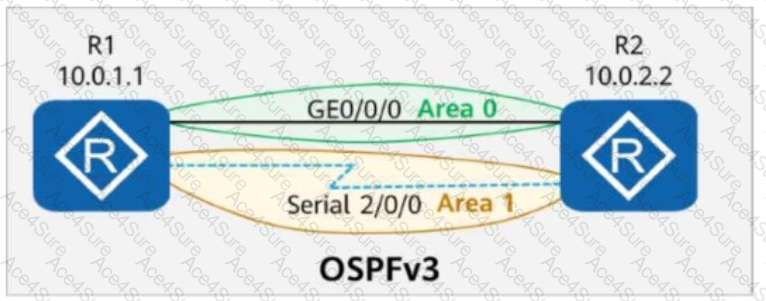Comprehensive and Detailed In-Depth Explanation:
Understanding OSPFv3 LSA Types
OSPFv3 uses different LSA types than OSPFv2, with some being similar in function:
Link-LSA (Type 8): Generated by every router on a link to advertise link-local IPv6 information.
Intra-Area-Prefix-LSA (Type 9): Advertises IPv6 prefixes within an area.
Network-LSA (Type 2): Generated only by the Designated Router (DR) to advertise information about all routers on a multi-access network.
Inter-Area-Prefix-LSA (Type 3): Advertises network prefixes between OSPF areas (generated by ABRs).
Route Distribution Analysis:
A. Inter-Area-Prefix-LSA (Type 3) ❌ (Incorrect)
Generated by an ABR to advertise prefixes between OSPF areas.
More than one ABR can generate this LSA.
❌ Not always generated by only one router.
B. Link-LSA (Type 8) ❌ (Incorrect)
Each router generates its own Link-LSA for each link it participates in.
This means multiple routers can generate this LSA.
❌ Not generated by only one router.
C. Network-LSA (Type 2) ✅ (Correct)
Generated ONLY by the Designated Router (DR) on a multi-access network (such as an Ethernet link).
Other routers do not generate this LSA, only the DR does.
✅ Correct answer: This LSA is generated by only one router (the DR).
D. Intra-Area-Prefix-LSA (Type 9) ❌ (Incorrect)
Generated by any router to advertise IPv6 prefixes within an area.
Multiple routers in an area can generate this LSA.
❌ Not generated by only one router.
Final Conclusion:
✅ C. Network-LSA (Type 2) is the correct answer because it is generated by only one router—the Designated Router (DR).
Thus, the correct answer is: C. Network-LSA.
[Reference:, HCIP-Datacom-Advanced Routing & Switching Technology V1.0 – OSPFv3 LSA Types and Multi-Area Behavior, Huawei Official HCIP-Datacom Study Guide – OSPFv3 Stub Areas and LSA Advertisements, Huawei Documentation on OSPFv3 DR/BDR Roles and LSA Generation]

